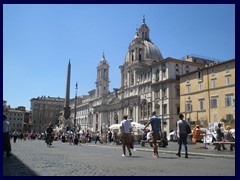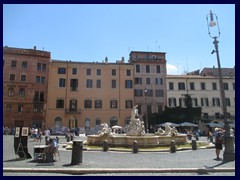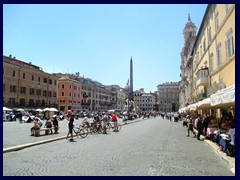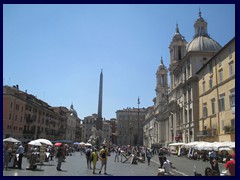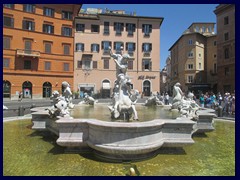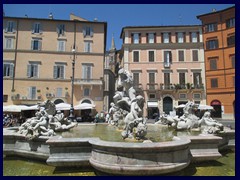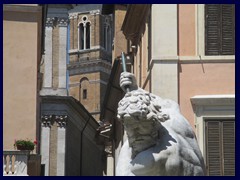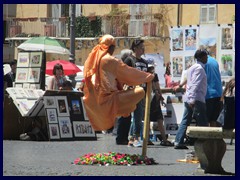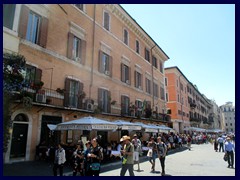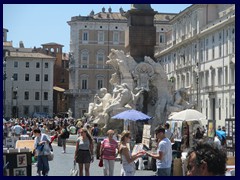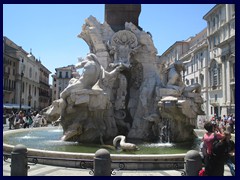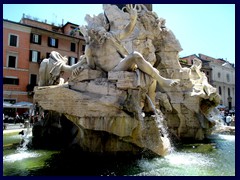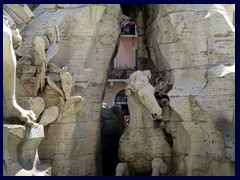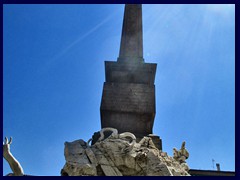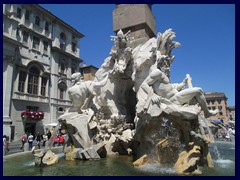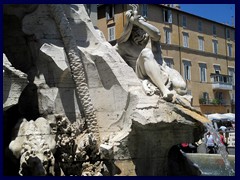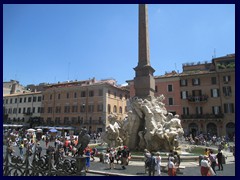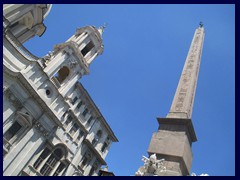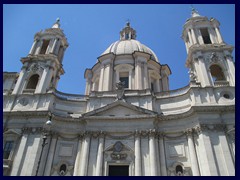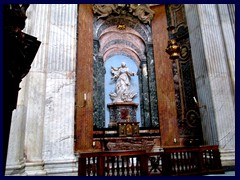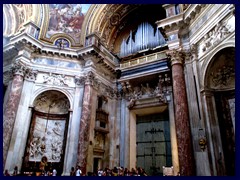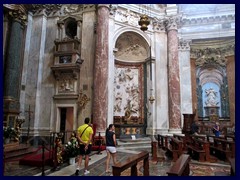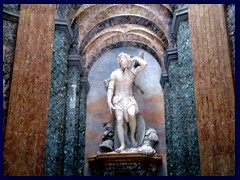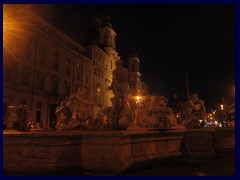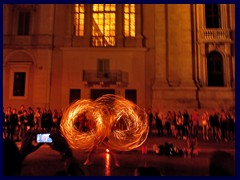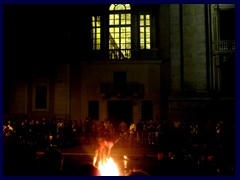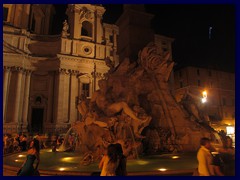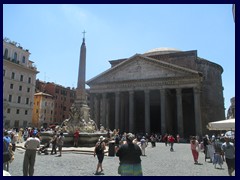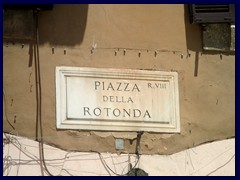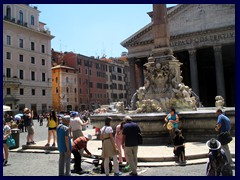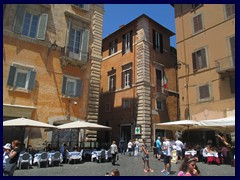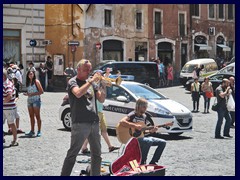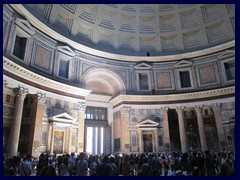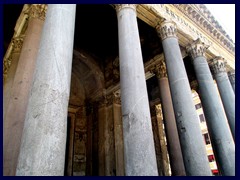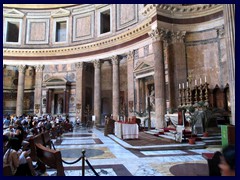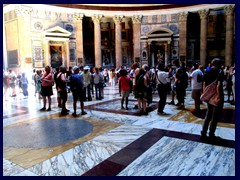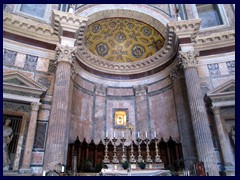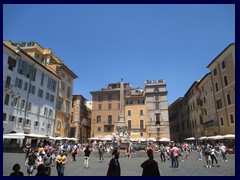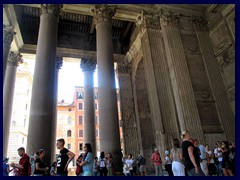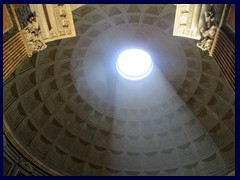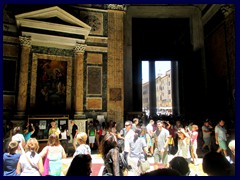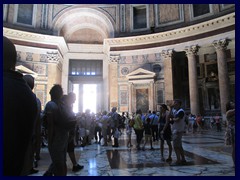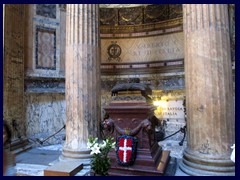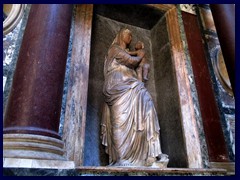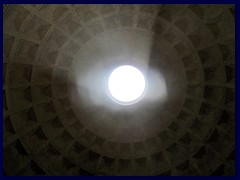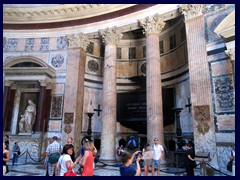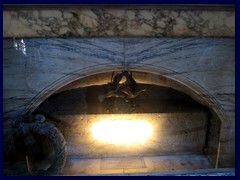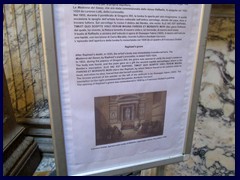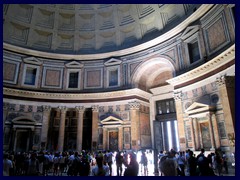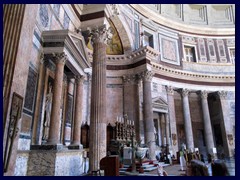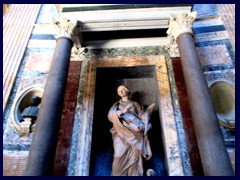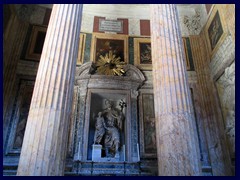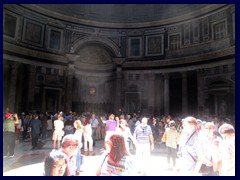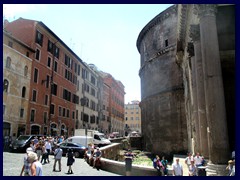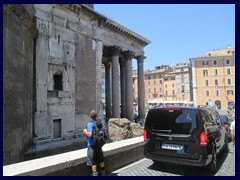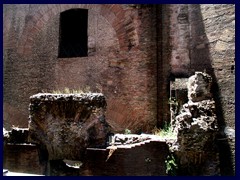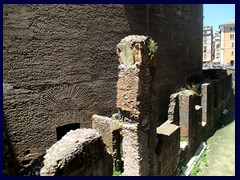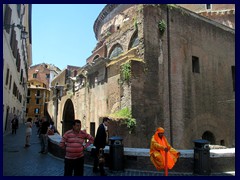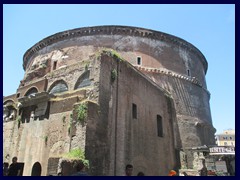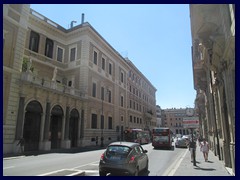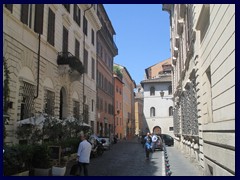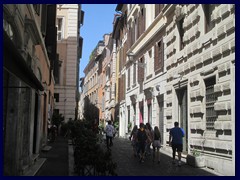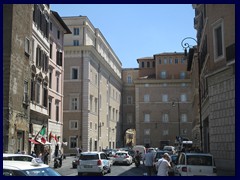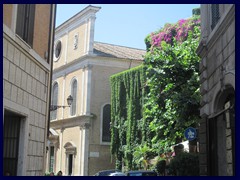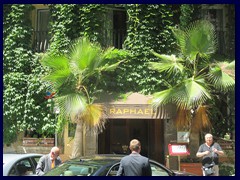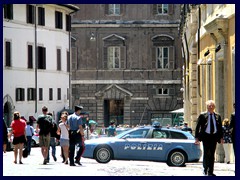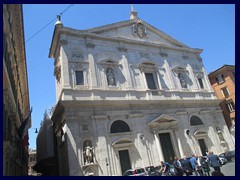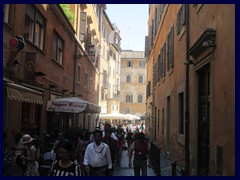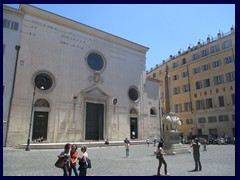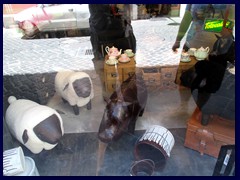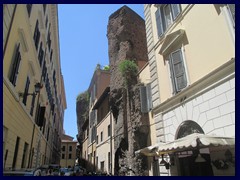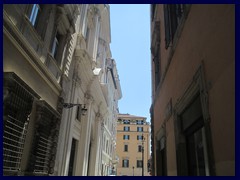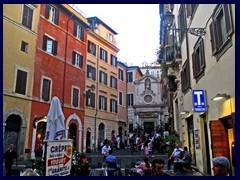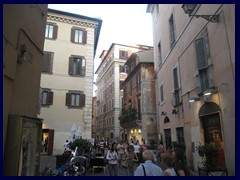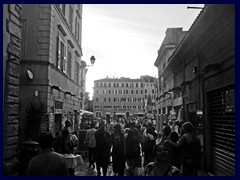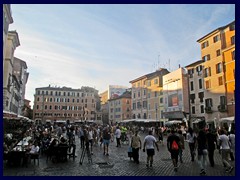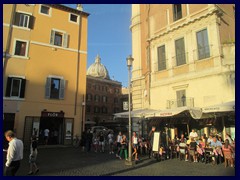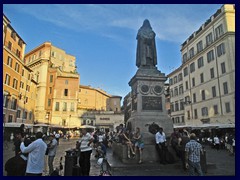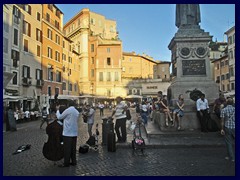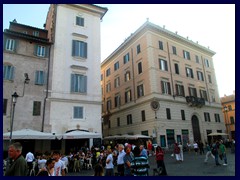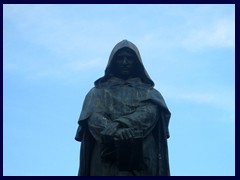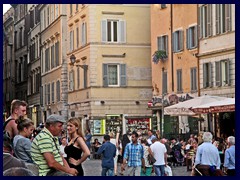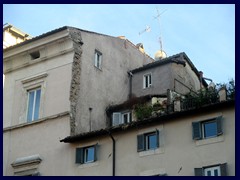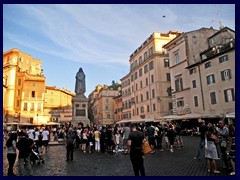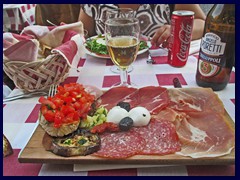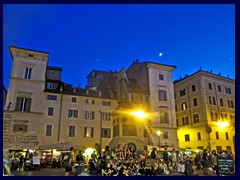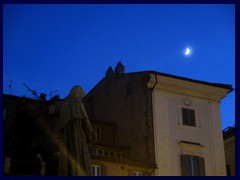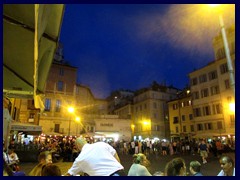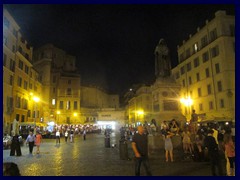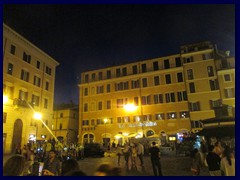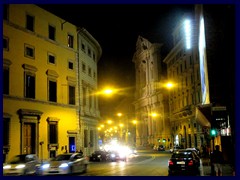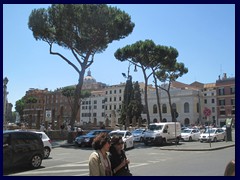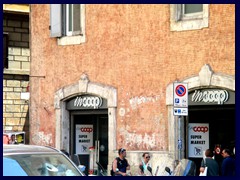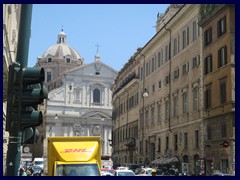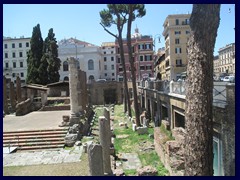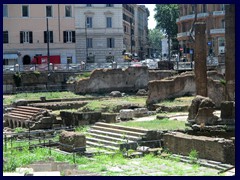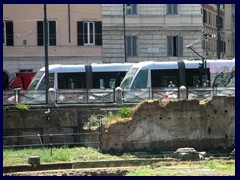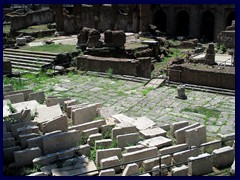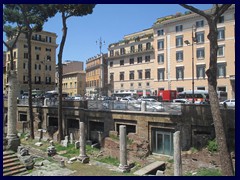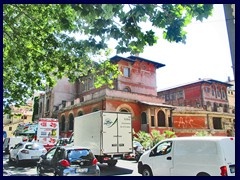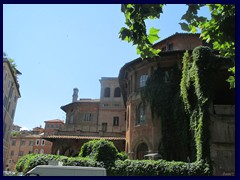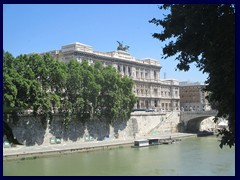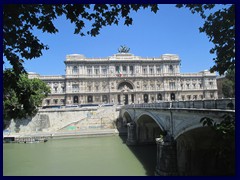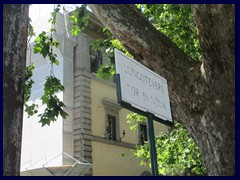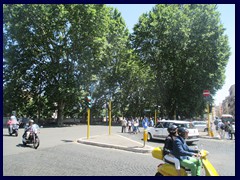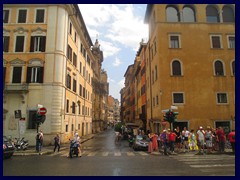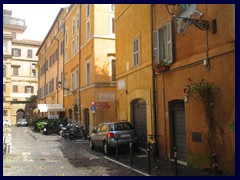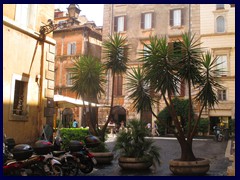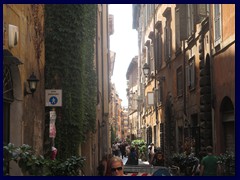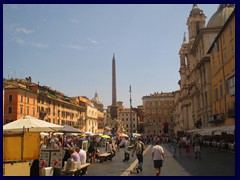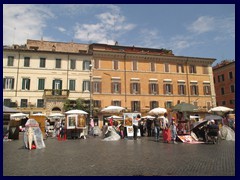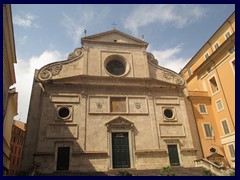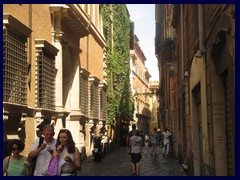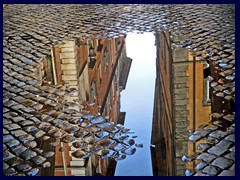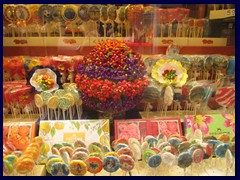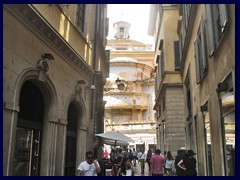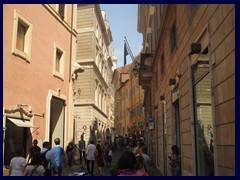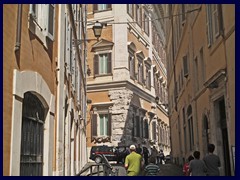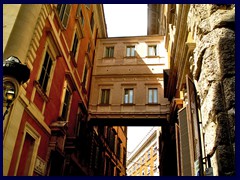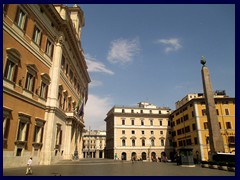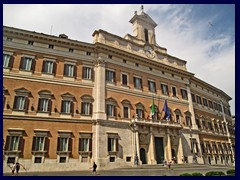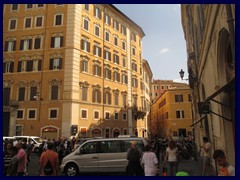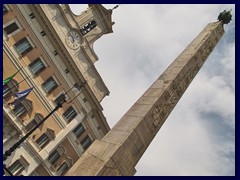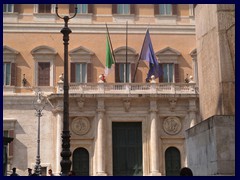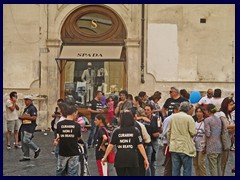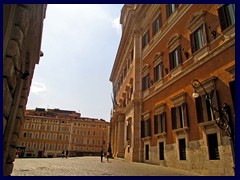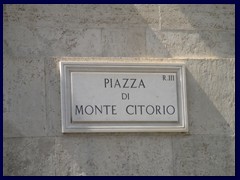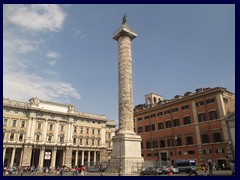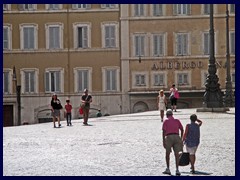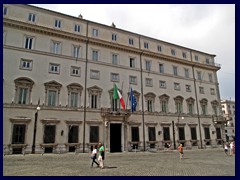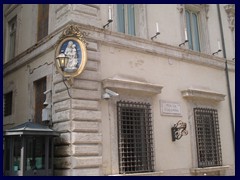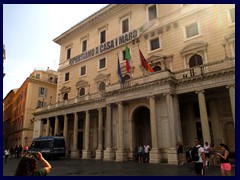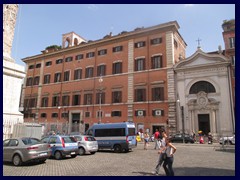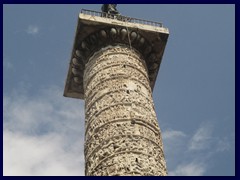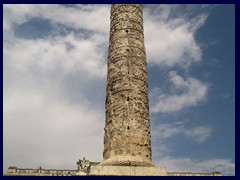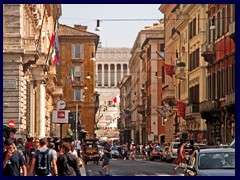Centro Storico West/Campus Martius
- Piazza Navona, Pantheon, Campo di Fioro, Largo di Argentina
Centro Storico is the historical city center of Rome. This page is about the West part of Centro Storico, at the East banks of the river Tiber, that divides the city into two parts.
Piazza Navona is one of the most famous, and probably the most beautiful square in Rome. It was built on the site of the old oval shaped Stadium of Domitian, built for athletic games, from the 1st century AD. At Piazza Navona you will find 3 beautiful fountains, and a white baroque church, Sant'Agnese in Agone, as well as many open air restaurants and cafés. The most famous fountain, Fountain of the Four Rivers, has an Egyptian obelisk in the center and was featured in Dan Brown's popular novel "Angels and demons", where a pope candidate drained. The fountain was designed by Bernini in the 1650s and represent rivers on four different continents .Everywhere around Piazza Navona tourists behold artists that make live paintings instantly. Since it is one of Rome's most touristy squares, the prices on the restaurants are very high. Palazzo Braschi (Museo di Roma) and Palazzo Pamphilj (the Brazilian Embassy), are also situated at Piazza Navona. We visited Piazza Navona several times, it really comes alive after dark.
Piazza Campo de Fiori is a more down to Earth alternative to the nearby Piazza Navona. Here you find a more bohemic atmosphere with more locals, open air restaurants with lower prices, a lively market and grittier buildings. Campo di Fiori is highly recommended, we visited an open air restaurant from afternoon to sunset, and tried antipasti with a beer. Campo di Fiori means "field of flowers", the place was once a flower field and today flowers are sold at the markets at the square. On the square you also will find the statue of Giordano Bruno, a philosopher who was put to death here in the year 1600, because he stated that the Earth was not the center of the universe! The statue is looking towards the Vatican, blaming it for his death. The memorial was financed by the freemasons.
Pantheon is a magnificent temple built more than 1800 years ago, standing at Piazza della Rotunda, a square that was named after the building. Today it is a reminder of the Roman Empire and is one of the best preserved Roman buildings in the world, and is considered the forerunner of all places of worship in the world. Pantheon means "temple for all the gods" and that is exactly what it was until 609 when it was converted into a church. It is famous for it's dome with a hole on the top, called the Oculus, where sunlight ("the light of God") is shining down on the floor on sunny days. There have been 2 earlier versions of the temple on the site, but the current version of Pantheon, ordered by emperor Hadrian, was completed in 125AD. Brick walls and marble columns as well as the tombs of the famous painter/architect Raphael and several Italian kings (like Vittorio Emanuele II) can be found here. The Corinthian columns at the portico (entrance) were carried all the way from Egypt! The dome is 43m high and Pantheon had the world's largest dome until 1436 (when a church in Florence got a larger dome). On Piazza della Rotunda, that is a very popular square to eat out at night, you also find a fountain with an obelisk from the 18th century.
Largo di Torre Argentina is an ancient square with ruins of four republican, pre-empire temples, as well as the ruins of a theater, Teatro di Pompey. The square is situated in the historic Campus Martius (Field of Mars) area in central Rome. The oldest temple, the temple of Feronia, was constructed around 300BC. Today Largo di Argentina is famous for it's large number of stray cats, sometimes it is called the "Cat's forum". It is today surrounded by heavy traffic of cars and trams, the busy Corso Vittorio Emanuele II passes by the forum.
